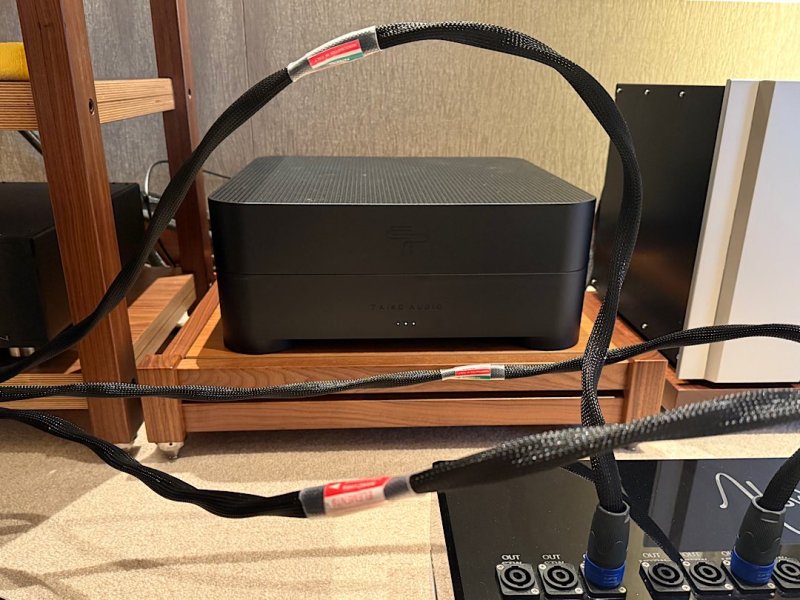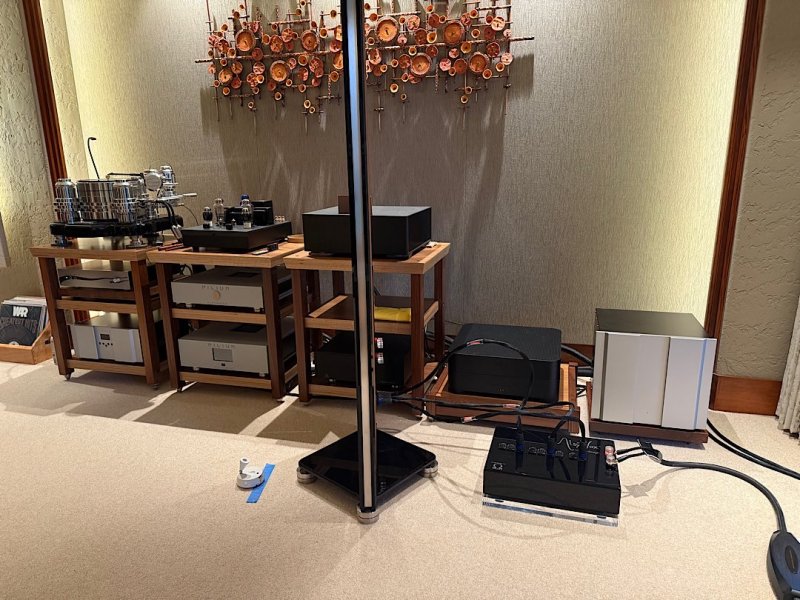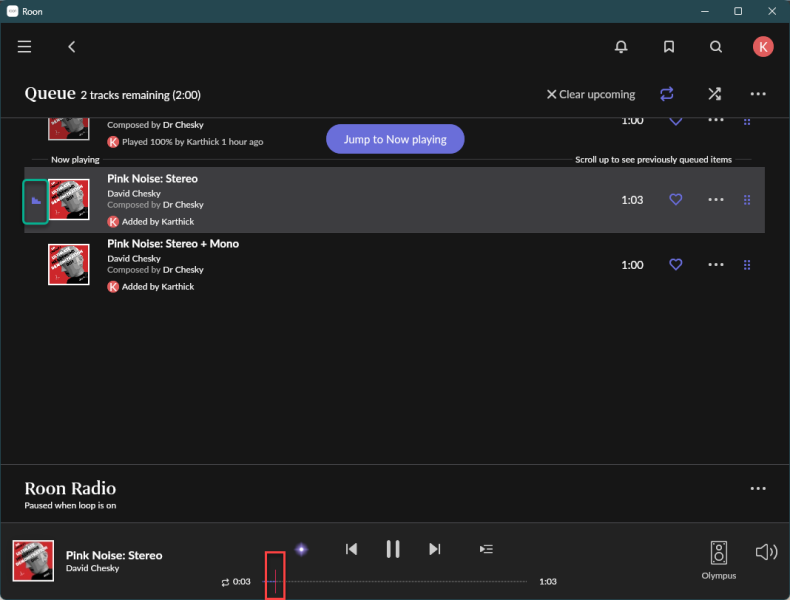It’s been a few weeks now since I got my Olympus (no internal storage) and I/O (fitted w MSB ProISL module) so wanted to share my impressions so far.
My system: Taiko DSD (powered by Uptone JS-2), Router, and Switch > [was Extreme w internal storage + XDMS Alpha software > MSB ProUSB] > Select DAC > Soulution 701+ (upgraded) mono pre-amps in dual mode (Siltech single crystal XLR and speaker cables) > B&W 800 D3s, running off a dedicated subpanel with 50A cabling from main panel through to wall outlets (30A sub-panel breakers).
I was listening to basically red book format content via a mix of local storage and streamed Qobuz files (SQ preference for local storage) having previously used PGGB upsampled files ever since I had a Chord DAVE DAC some time ago (I preferred the red book files with XDMS on Extreme vs the upsampled files).
My first compliment to Taiko is regarding the quality packaging and general productization with the app interface, interactions are slick and it doesn’t feel like a computer at all. FedEx delivered at 3:30pm. I was up and running with music by 5:00pm, including getting the cases from outside the garage down to my basement, associated rests, and taking connecting things up deliberately slowly.
I’d read the manuals the night before (!), and everything worked first time, even connecting Roon via the Taiko Router to the low power single-SSD QNAP NAS powered by the Taiko DSD that is now my ‘local’ storage. I’ve kept the BMS's on the default re-charging schedule and haven't thought about it since day one. I did a ‘practise’ shutdown and re-start after a few days, just so the first time I did it wasn't when a storm is threatening (my very life today), again very easy.
Many others have talked about the qualities of the Olympus, but at the risk of repetition here’s my take.
My first listening impressions after the 90 minute gap between Extreme XDMS Alpha and Roon on the Olympus & IO was of being hit between the eyes by enormous clarity, detail, dynamics, and massive soundstage - the immediate improvements from the Extreme to the Olympus are not subtle ones. I did initially miss some engagement and delicacy I was getting with Extreme & XDMS alpha, but that came along pretty quickly with use.
An additional benefit of the lower noise floor is that I can turn the volume up higher, which further emphasises the dynamics and fantastic bass.
I joked to my friend that its difficult to move in the listening room for all the ‘veils’ that are now lying discarded on the floor. Trying to describe it sounds contradictory: its (in a positive way) very detailed and any particular element of a recording can be followed with ease, whilst also experiencing the flowing, engaging whole of a performance; there is delicacy to be had in the decay of cymbals and piano notes, but also brutality when its called for.
Olympus doesn’t turn the worst recordings into an audiophile dream, but it digs into them and I find makes them more enjoyable.
What the Olympus does do for me is make every other recording into ‘must listen’ experiences - you can effortlessly hear a long way ‘into’ the recorded performance. After that first rush of jumping between well-known ‘demo’ tracks subsided, I now really want to sit down and engage with all music for a much longer time.
Over the last 6 months or so, for reasons that are too long and boring to go into, I’ve experienced my Taiko journey over again in fast-forward, going from Roon on a laptop via USB to the MSB ProUSB (proving the adage rubbish in = rubbish out), using an intermediary BluSound streamer via Toslink, adding in the Taiko Switch, Router, & DCD, then the Extreme via its original USB, then the Taiko USB Card (I mistakenly plugged the USB cable into the original USB connector at first, forgetting about the USB card…), then adding the last iteration of XDMS Alpha to the Extreme in place of Roon.
The Switch / Router / DCD, Extreme itself, USB card, and XDMS were all significant steps forward.
I’d describe Olympus as a leap forward - Olympus / IO, BMS, and XDMI are outstanding achievements by Taiko, and I feel lucky to be able to experience them along with their Switch, Router, and DCD. It’s ‘digital done right’ - huge congratulations to the team!
Now I’ve got used to the Olympus, aside from listening to lots of music new and old, I’ve started getting curious again and been listening to streamed Qobuz FLAC vs FLAC from a Synology NAS with 4 HDDs on my wider network vs WAVs on the single-SSD QNAP NAS connected to the Router and powered by the DCD that’s also powering the Router and Switch. Its early days - I’m only comparing one album so far that I’m pretty sure has the same ‘provenance’ between versions - but I think I like the QNAP version better - livelier, and more focussed bass. I’ll experiment more to figure out whether that is due to WAV, the better DCD power, or both.
If this journey ended where I am now I’d be in a very happy place, but Taiko is obviously on a very productive trajectory and I have a feeling that there is more goodness to come.
I’ve never had a situation where ‘better’ power and lower noise hasn’t improved SQ, so:
- I figure the more things I can get powered by BMS, the better …
- V2 DAC card will be given a serious audition (I ideally want balanced outputs & volume control). Even if V2 turns out not to be 'it', I’m pretty sure some future version will be compelling.
- the Taiko Router and Switch - in a separate IO, maybe...? (total guess)
- the SQ delta of XDMS c.f. Roon on Extreme was significant for me, lower noise resulting in less harshness, better soundstage, more engagement - I was wondering if a similar impact on Olympus would be possible given the different CPU and design changes, and it was great to see @EuroDriver 's recent bullish post about that.
In conclusion - well done
@Taiko Audio , thank you, and keep up the awesome work!





